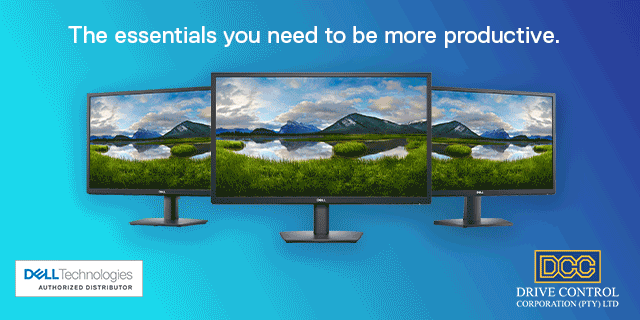Tips for understanding the world of Work 4.0
By Industry Contributor 7 April 2022 | Categories: news
NEWS SPONSORED BY DELL E-SERIES 24" MONITORS FROM DCC:
By Genevieve Koolen, Human Resources Director at SAP Africa
One of the unexpected positives from two years of widespread pandemic-related disruption is a complete rethink of the world of work.
Two years ago, corporate fixation on time was profound: employees were meant to be at the office at a designated time, and expected to utilise the time at the office as productively as possible. The thought of employees working from anywhere - or more importantly at any time - was not entertained beyond the occasionally-granted privilege.
The switch to remote work during the pandemic has exposed this obsession with time and place as a fallacy. Professionals, untethered from the office and working without the hands-on guidance of management, showed that greater workplace flexibility could not only work, but in some cases exceed older work models.
Since then the world of work has undergone a seismic shift away from inputs - adhering to time, completing tasks, ticking boxes - to outputs, which focus simply on completing tasks successfully and achieving the desired outcomes for the business.
Pandemic influences aside, the world of work is also undergoing huge changes due to the growing impact of next-generation technologies such as artificial intelligence and a rethink of how workers and technology combine for greater effect.
Understanding Work 4.0
In Europe, the future of work is being discussed under the umbrella term Work 4.0, referencing the influence of Industry 4.0 and widespread digitalisation.
This follows on from the birth of industrial society and the emergence of the first worker organisations (Work 1.0), the start of mass production and rise of welfare states in the 19th century (Work 2.0), and the emergence of globalisation and digitalisation since the 1970s (Work 3.0).
Work 4.0 is characterised by greater collaboration and cooperation, increased use of digital technologies and, importantly, a rise in flexible work arrangements.
It sees organisations blend together human expertise and digital technologies to create more productive workforces, improve monitoring and training of workers, augmenting workforce capabilities with new technologies, and automating mundane and low-value tasks.
At its core, though, the transition to Work 4.0 will involve much of what we are dealing with now: understanding and enabling a new model of work, and ensuring employees have the support they need to smoothly transition to new forms of work.
Tips for transitioning to a new way of work
It is important to understand that these are uncharted waters and there's no universal playbook for success. Organisations also simply don't have the luxury of slowing down to make careful changes.
Developing new work models is akin to trying to change the tyres and service the engine of a car traveling at 120 km/h on the highway. Companies still need to meet sales targets, drive revenue, transform operations and stay on top of all the other changes confronting them.
That said, here are some guidelines that can help business leaders as they reimagine their workplace models:
Firstly, set the intention. Develop a compelling vision for the new world of work in your organisation and get everyone on board. You don't want employees to each work according to their own version of the new world of work, as everyone will be pulling in different directions - to the detriment of themselves and the organisation.
Secondly, prioritise collaboration over control. The old command-and-control managerial approach cannot work effectively when employees are all working from different locations. Understand that the role of managers has changed and that the main priority is to get every employee to collaborate effectively and all work toward shared, clearly defined outcomes.
Next, build flexibility into the work model from the outset. Our new world of work requires different employees with varying skill sets and expectations to work from different locations, at different times. Company leaders will need to create flexible structures that enable employees to work effectively and quickly change approach if the current way is no longer sufficient.
Finally, create a safe space that is not overly punishing of mistakes. Every company will need to find their ideal workplace model through trial and error. If mistakes are punished, employees may disengage from the process and revert to old ways of work, which will invariably be detrimental to the business as the environment in which they operate has changed dramatically. Ensure there is a safe space where mistakes are met with constructive guidance and support, not punishment.
For the first time in memory, companies have no clear sense of what the end-goal of a changing workplace should look like. There is no manual to guide HR and business leaders, and the road ahead is bumpy and littered with hurdles.
By prioritising collaboration and creating space for experimentation and inevitable mistakes, companies and their employees can co-create a new way of work - one that works for everyone.
Most Read Articles

Have Your Say
What new tech or developments are you most anticipating this year?




